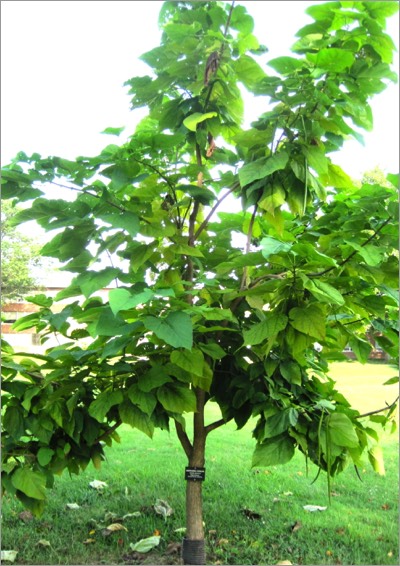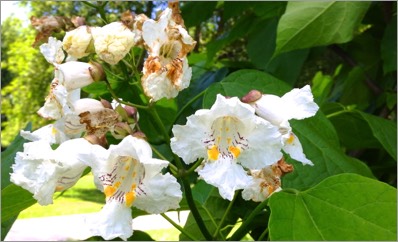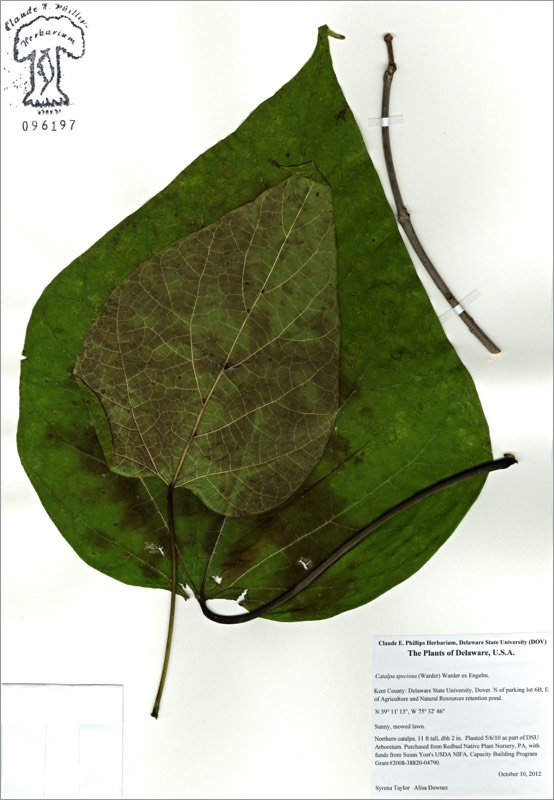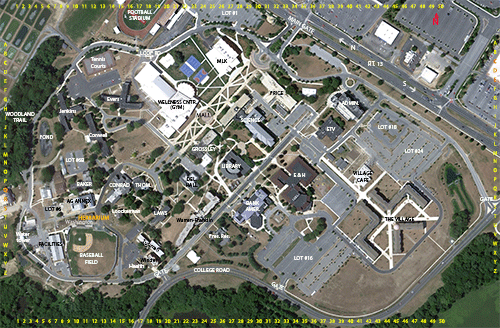*Northern catalpa


*Catalpa speciosa
NORTHERN CATALPA
Bignoniaceae
Central North America
Location: map coordinates L-9 (between Conwell Hall and retention pond), N 39°11'12'' W 75°32'45''
Planting history: planted 5/6/10. Source: Redbud Native Plant Nursery, PA. (Dr. S. Yost, USDA NIFA Capacity Building Grant funds).
Description:
Non-native species (not native to Delaware)
NORTHERN CATALPA
Bignoniaceae
Central North America
Location: map coordinates L-9 (between Conwell Hall and retention pond), N 39°11'12'' W 75°32'45''
Planting history: planted 5/6/10. Source: Redbud Native Plant Nursery, PA. (Dr. S. Yost, USDA NIFA Capacity Building Grant funds).
Description:
- deciduous tree
- etymology: Catalpa from the native American Indian name; speciosa = showy
- leaves heart-shaped, very large (8”-12” long; 6”-8” wide). Resembles empress-tree (Paulownia tomentosa), but leaves can be either opposite (in 2’s, as in empress-tree) or whorled (in 3’s), and pith solid (not chambered as in empress-tree)
- flowers showy; bell-shaped, white with purple and yellow spots inside; to 2” long
- fruits showy; woody, narrow, bean-like, very long (12”-22” long); hence sometimes called “cigar tree” (fruits of empress-tree are very different [oval capsules])
- native to a small area of Midwestern USA
Non-native species (not native to Delaware)


HIT REFRESH TO START LOCATION GRAPHIC